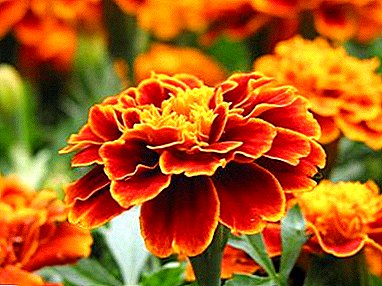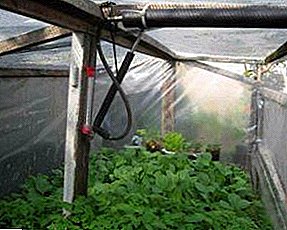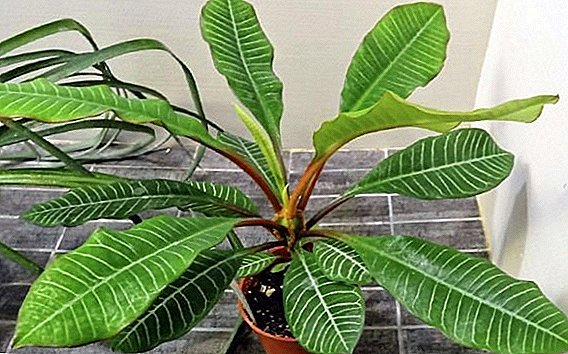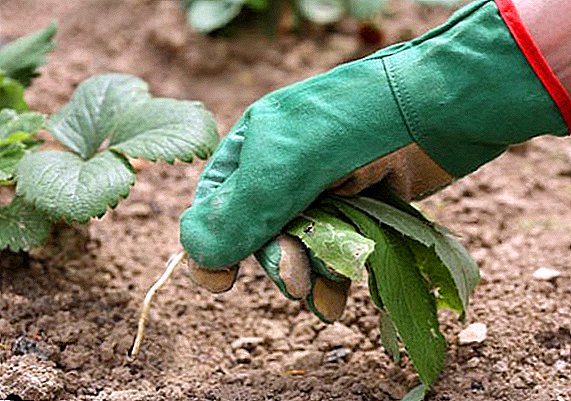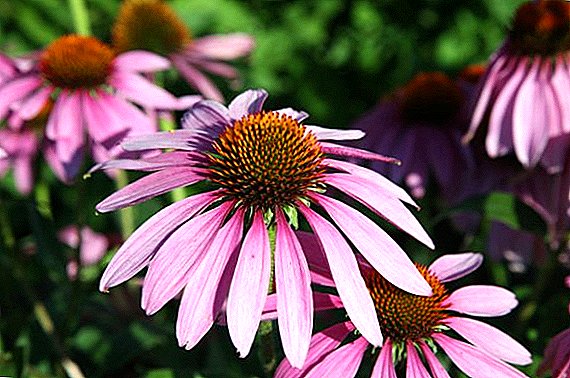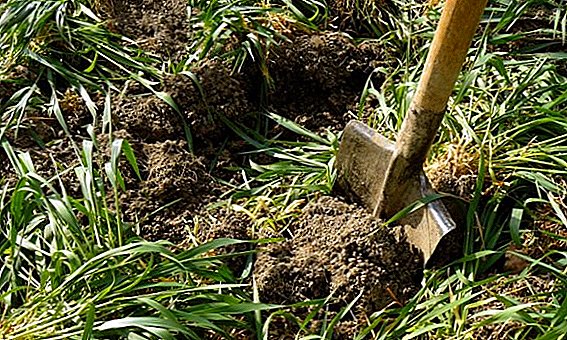 Competent farming is a whole science. Buying a large plot of land and planting some crop on it does not mean getting a good harvest and making a lot of money. In the agro-industrial complex, every detail and detail is important, because plants and crops require a special approach and care, and the land, which provides them with nutrients for growth and development, needs to be fertilized and no less than live cultures are processed.
Competent farming is a whole science. Buying a large plot of land and planting some crop on it does not mean getting a good harvest and making a lot of money. In the agro-industrial complex, every detail and detail is important, because plants and crops require a special approach and care, and the land, which provides them with nutrients for growth and development, needs to be fertilized and no less than live cultures are processed.
If you are a proud owner of a land plot, no matter if it is large or small, and you regularly plant something on it, the following information is for you. The soil needs constant enrichment, because it can be depleted and lose its fertility. There are artificial methods of fertilizing the soil, and there are plants that can rid the top layer of soil from weeds and improve its mineral composition. These plants include the usual oats. Let's find out in more detail how oats can help the soil, when and how it should be sown as siderat - in the fall or spring, and what to do with grown plants.
Why are they sowing siderats
Siderates are grown not for food or for sale. These are plants with a special chemical composition that can restore soil depleted by other plants and prepare it for the next harvest season. They are not collected and not harvested.  Such plants plowed into the ground shortly before their flowering - when in green stalks most of all nitrogen and other important elements.
Such plants plowed into the ground shortly before their flowering - when in green stalks most of all nitrogen and other important elements.
Important! Such a crop as beets strongly dries up the soil during growth, so using oats as a siderat after beet crops will not work - it will either take too much water during watering or dry before it blooms. But before beet sowing is very profitable. - The stems of this grass are juicy, nutritious and retain moisture in the soil.
Their stems quickly gain the so-called green mass, which, after plowing, turns into compost, and the extensive root system captures all the upper layers of the soil, preventing the weeds from sprouting. Those herbs that manage to germinate do not receive enough sunlight due to the thick siderat cover and eventually die. In addition, the root system of siderats well penetrates the soil, improving the flow of thawed snow and rainwater, oxygen, and also protects the fertile layer from blowing away in those regions dominated by strong winds. 
Oats as a siderata: what is the value and disadvantages
In addition to legumes, often grown as siderats, rye, barley and oats are also very popular. Oats belong to one of the most ancient cereal crops, people planted it in spring and in the winter as a siderat, when rye and wheat were not yet.
The value of oats is as follows:
- Protein mass. Its stems are especially nutritious - they contain a lot of valuable protein, much more than alfalfa and clover.
- Mineral composition. There is less nitrogen in oats than in rye, but there is plenty of potassium and phosphorus in it. It enriches viscous clay soils.
- Aeration. This grass has a strong root system - it loosens dense soil with powerful roots and, in addition to vitamin enrichment, ensures oxygen enrichment.
- Strengthening. Loose, unstable soils, this root system, on the contrary, binds, so that the grass is good for any type of soil.
- Herbicidal properties. Growing up, this grass forms dense plantings, its stems are located close to each other, therefore no weeds between this crop can appear - it simply drowns them out.
- Unpretentiousness. To the soil this grass is quite undemanding, it grows on loams, black soil, peat bogs, clay and sandy soils. Dream agrarian!
- Productivity Based on one hundred, the yield of this crop gives a mass equal to 100 kg of high-quality manure.

Did you know? Oats were first introduced into the international classification of cereals in 1753, although it was known to farmers for more than one thousand years. They attributed it to the family Myatlikovy because of the beautiful tassels, in which flowers appear and the grains ripen.
The disadvantages of oats, each farmer considers his:
- A small amount of green mass. Perhaps in the spring for the depleted lands of one oat will not be enough as a siderata, but to maintain in good order the site on which the seed shift is produced and well followed, this culture is suitable.
- Little nitrogen in the composition. Due to the fact that there is not very much nitrogen in this crop, it has to be sown where alfalfa or clover is already growing, and then plowing two cultures at once.
- The need for low temperatures and frequent irrigation. Oats like shade, coolness and abundant watering. For regions with a cold climate and a wet spring, it is suitable, and in hot weather, on the contrary, it fades and dries.
As you can see, the advantages of this siderat quantitatively outweigh its disadvantages.
Features of growing
There are several secrets, knowing that you can grow oats with a large green mass and a strong root system, without tiring the soil. Planted at different times, the grass will give different nutritional value, on which the harvest for the next year will depend.
Mustard, buckwheat, phacelia, lupine are also used as green fertilizer.
Which crops should sow before?
Let's say right away - cereals can not be sown before cereals. Therefore, if you plan to lay a field of buckwheat, oats or wheat, this siderat will not work for you. It is still not advisable to sow oats in the area where potatoes will later grow. The pest called "wireworm" affects both oat green manure crops and potato planting, and this lack of grain outweighs all its advantages. To prevent the harvest of root crops to disappear, use another siderat in front of potatoes.
If the potatoes grew on the field last year, and in this you plan for sevosmenu, oats, on the contrary, will be useful - it will destroy the remnants of potato scab in the soil. For all other crops, this grass will feed the soil well, so safely plant raspberries, currants, sweet peppers of different varieties, tomatoes, cabbage, and strawberry and strawberry sockets into enriched land. 
Important! Despite good growth in a cool climate, oats do not tolerate sharp frosts and dries out during them. So that your crops are not lost, sow this crop in October or March, but not before winter.
When and how to sow siderat
It is cold-resistant and moisture-loving cereal. Therefore, it is necessary to sow it in a cold, wet time, best in october. As soon as the last harvest is removed from the fields, and the soil has not yet been flooded with autumn rains, the seeds are introduced into the soil. Frost, this grass will not make, therefore, if the winter is planned early, it is better to transfer the sowing in the spring. If there are thirty to forty free days before the frost, the grass will have time to gain the necessary green mass and become a good fertilizer - perepret and peregnut under the snow.
Spring planting siderata depends entirely on the weather. In warm regions, seed laying starts in February, when meltwaters appear under the snow. If winter is cold and long, oats are used as siderat at the end of March, as the frosts recede. Then there is just a month left before ripening of stalks, plowing up the soil and planting crops. It is possible to enrich the soil with this siderat until September, inclusive - for early and late crops. Then a monthly break is taken and autumn sowing is carried out under the snow.  Before you bring the seeds into the soil, treat them with a weak solution of potassium permanganate to remove all pathogens from them and increase germination. Soak the seeds in the solution for twenty minutes and wash them under running water. It is most convenient to use gauze - the seeds do not flow together with water and rinse well. The earth will have to be loosened and cleaned from the old tops - it needs rest and a lot of air. Bring in seeds in random order, in bulk, do not lay out rulers and beds.
Before you bring the seeds into the soil, treat them with a weak solution of potassium permanganate to remove all pathogens from them and increase germination. Soak the seeds in the solution for twenty minutes and wash them under running water. It is most convenient to use gauze - the seeds do not flow together with water and rinse well. The earth will have to be loosened and cleaned from the old tops - it needs rest and a lot of air. Bring in seeds in random order, in bulk, do not lay out rulers and beds.
On a hundred of land you should take about 2 kg of oat seeds. The main thing is to distribute them evenly so that there are no bald areas in the crops. If the soil is dry, it is recommended to spray it with a hose, but always with a sprayer so that the earth does not become dense and knocked down.
Did you know? Total oat genus includes twenty-two names. Of these, only three - useful and grown crops. The remaining nineteen are considered malicious weeds. Their respective names - dubious, barren, empty and favorite of the weed race - bearded oats.
How to care for crops
This grass needs abundant watering. If it is not provided by the weather, you will have to add moisture. Once every three days, check the condition of the crops - whether the sprouts of what type they are, the leaves develop, develop normally or dry in warm weather. If the stalks of oats do not want to grow, perhaps the previous culture has depleted the land too much even for the siderat. In this case, add a little mineral fertilizer - this grass will suit both nitre and superphosphate. In general, oats are an unpretentious crop and do not need anything other than sufficient moisture. 
When to mow oats
From the time of sowing to mowing, thirty or forty days should pass - be guided by the grown green mass and by a whisk of flowers. If pollen starts to appear on it, it's time to cut the stalks. When autumn sowing you just fall into the last days before the cold. If you planted this grass in the spring, then cut the stems before the onset of hot May days.
Important! Oats loosens loam and clay, cleans the soil from putrefactive bacteria and removes excess moisture from the soil. Immediately on the oatmeal basis, you can plant cucumbers - The harvest will increase significantly.
When spring mowing, plow oats into the soil no later than two weeks before planting a crop, otherwise it will not have time to be too much. If you mow oats in November, then do not bury it in the ground, do it shortly before the April sowing. The oblique stems will not allow the ground to freeze through too deeply, so in the spring it will be ready for sowing and planting earlier than the one that was not covered. If the green mass turned out a lot, do not close it into the soil all, otherwise it will turn sour. Take the part to the compost pit or prepare silage-type feed for livestock.  Agriculture is the most appreciative industry. It is good enough to work hard and approach the cultivation of the land correctly - and the results will certainly be visible. In the sowing business can not rush. Lay the oat seeds in the prepared, loosened earth, when their time of wet weather comes, watch the growth of the stems, mow them when the shoots are no less than fifteen centimeters, and do not allow water to stagnate on the site.
Agriculture is the most appreciative industry. It is good enough to work hard and approach the cultivation of the land correctly - and the results will certainly be visible. In the sowing business can not rush. Lay the oat seeds in the prepared, loosened earth, when their time of wet weather comes, watch the growth of the stems, mow them when the shoots are no less than fifteen centimeters, and do not allow water to stagnate on the site.
Before plowing oats into the ground, be sure to crush it so that the humus is formed two weeks before the next planting of crops. Knowing these simple rules and applying them in practice, you will restore the fertility of your land and prepare it for the next successful growing season.




